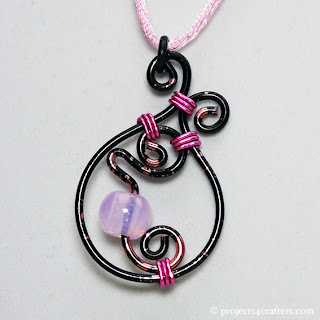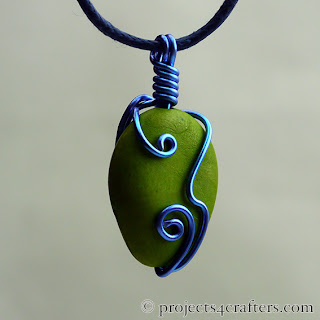Having said that though, I was very lucky when I discovered my car had decided to pack up on me the night before - after all, I could have got stuck half way up the A1 before I found out! After a moment of panic wondering how I was going to get there, I spent a further 30 minutes panicking as I trawled the internet trying to find a car rental firm that could let me pick up the car first thing the next morning. Fortunately, I found one close by and when I arrived to pick it up, was absolutely delighted to receive a free upgrade! I've never driven such a posh car in the UK. The closest I ever got to anything like it was when I drove a Lexus in the States, but even that didn't have a camera in the back that automatically switched on when reversing into a driveway - now that's high tech!
I've just uploaded another wirework project for anyone who fancies trying their hand at jewellery making...
B/0026 - Spiral Pendant
If you prefer larger pendants you can use the same wire wrapping technique but on a larger frame - just use a pot (or anything that is the size and shape you want your frame to be) as your former.
If you prefer smaller pendants you can use small beads as a central feature and then wire wrap around them. For the pendant below, I've used some of Efco's 0.6mm copper core wire and the herring bone wrap.
'til the next time, Happy Crafting...
Fee x













































